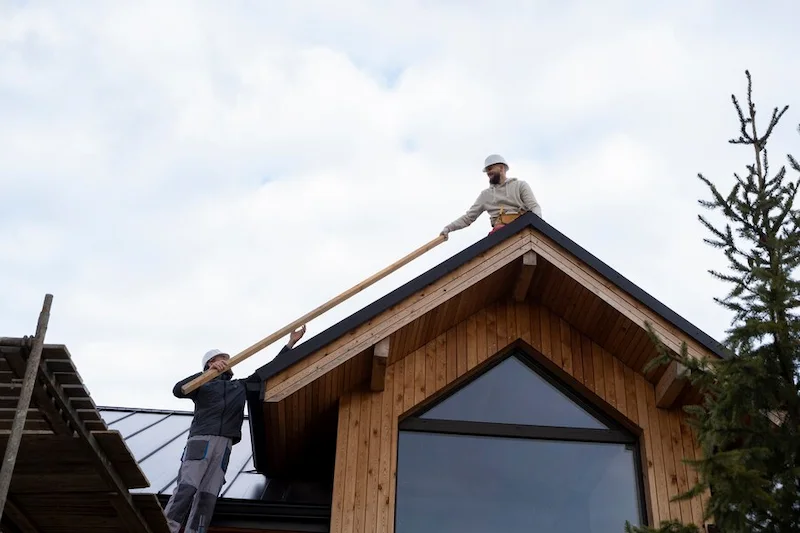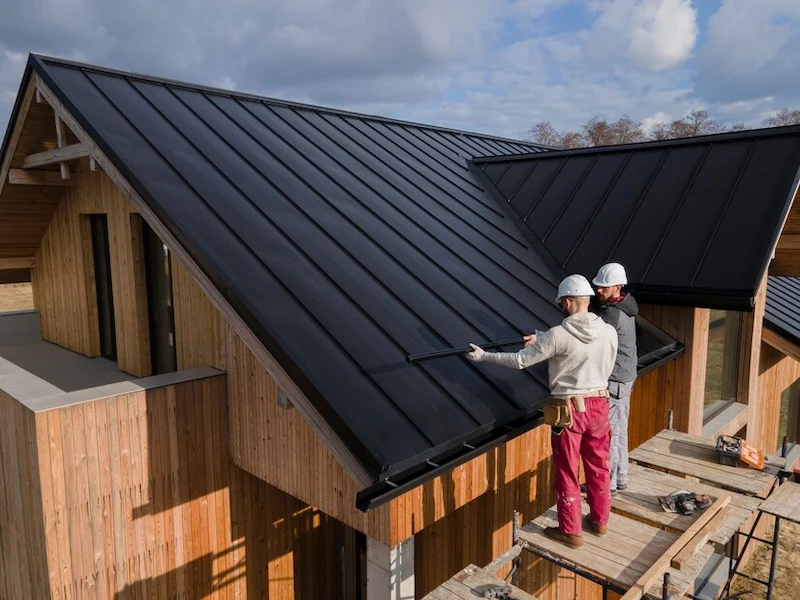Table of Contents
When it comes to maintaining a home, the roof is often overlooked—until there’s a problem. But understanding the lifespan of your roof can save you a lot of headaches and money in the long run. This blog post aims to shed light on why no roof lasts forever and what you can do to extend its life.
The Importance of Understanding the Lifespan of Your Roof
A roof does more than provide shelter; it plays a key role in maintaining your home’s structural soundness and boosting its overall value. Knowing how long your roof is expected to last can help you plan for repairs or replacements, ensuring your home remains safe and sound. In this post, we’ll explore the factors affecting roof longevity, signs that your roof needs attention, and tips on extending its lifespan.
Factors Affecting Roof Longevity
Material Choice
The type of material used in your roof plays a significant role in its lifespan. Asphalt shingles, for example, typically last 20-25 years, while metal roofs can last up to 50 years. Slate and tile roofs are renowned for their long-lasting durability, often exceeding 100 years. However, these longer-lasting materials come at a higher initial cost. Choosing the right material is essential in balancing durability with budget. To make informed decisions and explore options, click here or do a local internet search for top-notch materials that promise longevity and performance. Make it a point that when choosing a roofing material, it’s essential to balance longevity with your budget and aesthetic preferences.
Climate and Environmental Factors
Climate and environmental factors heavily impact roof longevity. Extreme weather conditions such as heavy rain, high winds, snow, and hail can deteriorate roofing materials over time, leading to leaks or structural damage. Sun exposure also plays a crucial role, as excessive heat and UV rays can cause materials like asphalt shingles to warp or crack. Additionally, roofs in coastal areas face salt air corrosion, while those in forested regions may experience moss and algae growth. Regular inspections and maintenance can help detect and mitigate these issues, prolonging the roof’s life.
Installation Quality
The quality of installation is crucial for the longevity of a roof. A poorly installed roof can lead to a host of problems, including leaks, structural damage, and premature failure, regardless of the materials used. To ensure a quality installation, it’s essential to hire experienced, reputable professionals who follow best practices and local building codes. Attention to detail during installation, such as proper sealing and alignment, can prevent common issues that arise from neglect or shortcuts. Investing in quality installation can save on costly repairs and extend the life of your roof.
Maintenance
Regular maintenance is vital for prolonging the life of your roof. Simple actions like cleaning gutters, removing debris, and inspecting for damage help prevent significant issues. Identifying and repairing small problems early, such as replacing damaged shingles or fixing leaks, can stop them from escalating into costly repairs. Moreover, scheduling routine professional inspections allows for expert evaluation, ensuring that potential problems are addressed promptly. Consistent maintenance not only preserves the roof’s integrity but can also enhance energy efficiency by ensuring proper insulation and ventilation.
Signs Your Roof Needs Attention
Visible Indicators of Roof Deterioration
Being able to identify the early signs of roof deterioration can save you from more extensive damage and costly repairs. Look out for missing or damaged shingles, which can expose your roof to water damage. Other signs include sagging, which may indicate structural issues, and granules in your gutters, which suggest your shingles are wearing out. If you notice any of these signs, it’s time to consult a professional for a thorough inspection.
The Cost of Ignoring Roof Maintenance
Financial and Safety Implications
Neglecting your roof can lead to significant financial and safety issues. Water leaks can damage your home’s interior, leading to costly repairs for walls, ceilings, and electrical systems. Additionally, a compromised roof can pose serious safety risks, such as collapse or mold growth, which can affect your family’s health. Regular maintenance and timely repairs can prevent these problems and save you money in the long term.
You may like – The Benefits of Regular Roof Replacement for Home Maintenance
Solutions to Extend Roof Lifespan

Professional Advice and Tips
To extend the life of your roof, follow these professional tips:
- Regular Inspections: Schedule annual inspections with a certified roofing professional to catch any issues early.
- Clean Gutters: Regularly clean gutters to avoid water accumulation and potential damage.
- Trim Trees: Overhanging branches can damage your roof and provide a pathway for pests.
- Address Repairs Promptly: Address small repairs early to prevent bigger, costly issues.
- Proper Ventilation: Ensure your attic is well-ventilated to prevent moisture buildup and heat damage.
Following these tips can help you get the most out of your roof and avoid unexpected expenses.
Understanding the factors that affect roof longevity and taking proactive steps can significantly impact your home’s value and safety. Regular maintenance, quality materials, and professional installation are key to a long-lasting roof. Don’t wait until there’s a problem—take action today to ensure your roof remains in excellent condition for years to come. If you need expert advice or a professional inspection, don’t hesitate to reach out to us. Your roof is an investment in your home’s future—protect it wisely.
By following these guidelines, you can make informed decisions about your roof and enjoy the peace of mind that comes with a well-maintained home.
Want to explore something different? Injured in a Car Accident? Understanding Your Legal Rights and Options

